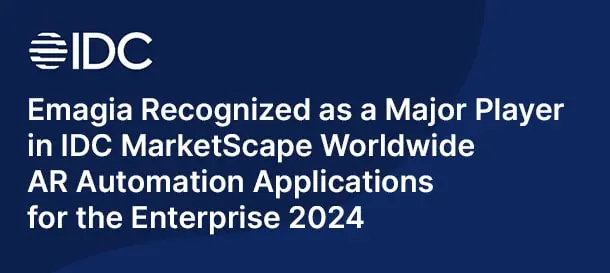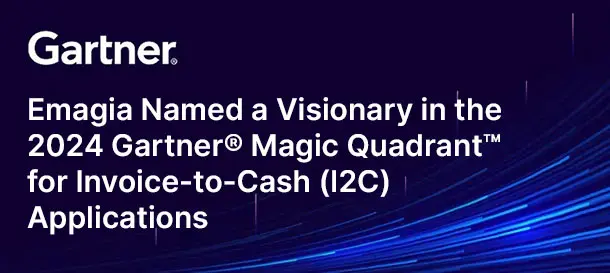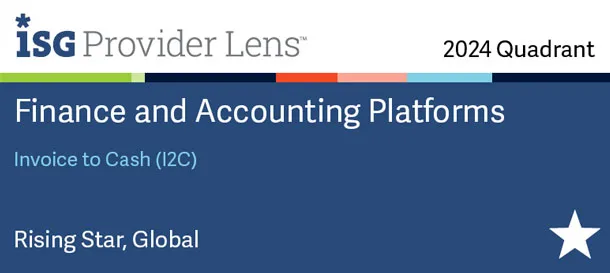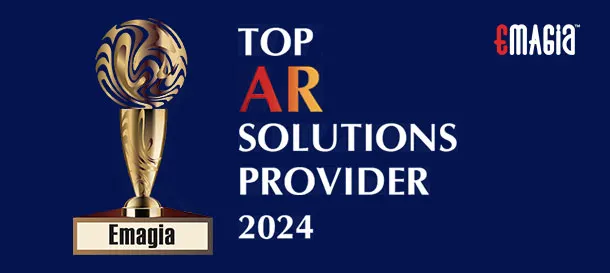Any enterprise engaged in successful revenue generation through credit sales will have some level of bad debt. While good credit, collections, and other order-to-cash practices help manage bad debt, it takes AI-powered technologies to limit it at an enterprise scale.
Bad debt is a receivable that goes unpaid, which the creditor company will not collect. A certain amount of bad debt is a cost of doing business with customers on credit. Any enterprise engaged in successful revenue generation through credit sales will have some level of bad debt. The objective is to minimize it. Complete elimination, while perhaps possible, is achievable only through restricting sales to the extent that the enterprise loses out on revenue it would otherwise realize from taking appropriate risk.
There are best practices surrounding AR and order to cash (O2C) essential to minimizing bad debt that companies can follow. But best practices for a large organization are insufficient to the job. Discrete automation of parts of the O2C process fail in the face of credit application and collections volumes and the operational speed required of for each. Only a holistic system leveraging artificial intelligence and analytics can provide genuine automation.
Minimizing Bad Debt
There are two critical areas among several essential practices where proper execution helps an enterprise minimize bad debt. One is the organization’s credit policy and process. The other is a solid collections process. Credit and collections policies and procedures must be well developed as an organization grows or the level of bad debt is likely to increase. But for large and global enterprises, implementing and consistently following sound practices is a challenge due to sheer volumes.
Poor practices will fail even if they are automated. But good practices will fail in the face of heavy volume and the need for speed. Credit managers must be efficient as well as astute and accurate. The same holds for collections.
In support of an enterprise, the O2C process must enhance customer experience, increase efficiency, and support growth while minimizing risk and bad debt. Unfortunately, achieving these goals becomes more difficult with increased size and complexity.
Discrete automation solutions of the past are insufficient to the needs of a modern enterprise. Digital transformation of O2C has the capabilities necessary to meet the demands. Digital transformation refers to implementing a holistic platform and system that unifies all accounts receivable data and automates an integrated end-to-end O2C process.
Gartner refers to such system implementation as hyperautomation. Hyperautomation employs artificial intelligence (AI)—including neural networks, machine learning, natural language processing and other kinds of AI—along with analytics. These intelligent technologies operating from a single data lake of information improve automation technology exponentially.
AI-Powered Credit
An AI-supported digital credit system optimizes the credit process, removes friction, and speeds decisions. It begins with a digital credit application that allows digital signatures and provides an audit trail. Then, reference checks are handled digitally with easy-to-respond forms and auto-reminders, significantly shortening the time involved. A digital system also automatically captures other important information, such as credit bureau data, bringing together all the necessary information for credit decision-making.
The digital credit system performs credit scoring automatically according to the enterprise’s models for evaluating credit references and bureau information, along with internal records of existing customers. The system then sets credit limits according to the enterprise definitions.
The enterprise must have sound credit policies and rules. Consequently, the process provides controlled, consistent decisions. Rule-driven, system-assigned credit limits drive productivity, especially for organizations with a high volume of credit applications.
A digital assistant (think Siri or Alexa) supports the credit operation, relaying information to relevant internal staff, such as providing account status to sales representatives. An AI-powered credit process dramatically accelerates the credit process, with credit approvals returned in a day rather than a week or two. For specific credit categories, approval is nearly immediate.
This decision speed meets or exceeds The Hackett Group’s “best-in-class” credit decision response time benchmark of two days. As a result, digital credit enables the organization to provide customers with a superior experience.
AI-Powered Collections
The Hackett Group says that “going digital” is a requirement to meet collection best practices. Enterprise collection volumes exceed the capacity of manual and semi-automated approaches. But the application of integrated, intelligent technologies and big-data management makes the transformation of collections possible.
AI and associated technologies remove some 80 percent of manual collections work. As a result, collectors can monitor all accounts, manage the exceptions, and gain insight from data.
A digital O2C system like Emagia provides an enterprise-wide view of receivable portfolios in near real-time, heretofore impossible. Emagia’s collection application, like its other O2C applications, accesses the data lake. So the information is not siloed. For example, cash application information is immediately available to collections, so no effort is wasted on collecting payments already made. Similarly, collection status is available to credit and sales.
For collections, as for credit, the enterprise must define a strategized process and messaging. Then, the strategy and various dialogs are applied through the intelligent digital collections application and set on autopilot. The system then determines appropriate messaging and actions for each customer boosted by machine learning and analytics.
The automated system maintains continuous touch with all customers, large or small. Analytics finds patterns and forecasts individual customer behavior. The system can then provide invoices and statements with tailored messages based on the customer’s behavior and the company’s strategy. In addition, a digital assistant responds to customer inquiries. As a result, the digital collections system touches 100 percent of customers, otherwise impossible.
Bad Debt Controlled
Consequently, an enterprise can better control bad debt, keeping it at a level acceptable according to the company’s revenue/risk model. For an organization with a high volume of credit applications and sales, AI and analytics-empowered automation operating from a single data source achieve AR goals. Credit and collections become genuinely automated, and data-driven intelligence operations add value on a new scale to the organization, including minimization of bad debt.
For a more detailed look at digital credit, collections or the complete capabilities of the entire digital AR/O2C platform and system, contact Emagia.




